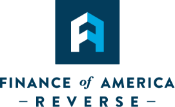There are a number of reasons why women have had a considerably harder time saving for retirement than men. According to a 2016 study by the National Institute on Retirement Security (NIRS), titled, “Shortchanged in Retirement, The Continuing Challenges to Women’s Financial Future,”1 two of the major reasons are:
- For women age 65 and older, the data indicate that their typical income is 25 percent lower than men;
- Women may not have as much available to draw from Social Security if they have taken time out of the workforce for child rearing.
Household incomes are on the rise for those 65 and older, but women who have less income than men can face higher medical expenses and are more likely to need long-term care in the future, the study found. The higher cost for medical expenses is mainly due to the fact that women have longer lifespans than men, which means they will need more money to see them through retirement.
Additionally, the study found that women are 80 percent more likely than men to be impoverished at age 65 and older, while women between the ages of 75 to 79 are three times more likely than men to be living in poverty.
In 2012, it was estimated that a woman who is 65 would need between $154,000 and $210,000 just to cover medical expenses in retirement, according to the Employee Benefits Research Institute (EBRI).2
Making up for the funds that they don’t have in retirement, “Social Security is an important source of income for older households with incomes less than $80,000. Women who are widowed, divorced, and over age 70 rely on Social Security benefits for a majority of their income,” the NIRS1 study found. The study pointed out potential public policy options to help reduce women’s vulnerability to financial hardship as they age. One option would be to strengthen Social Security benefits for women.
If you are homeowner, 62 or older, with considerable equity and looking to age in place, another viable strategy may be tapping into home equity. A reverse mortgage can help close the gap in your retirement income, especially for women dealing with these common retirement shortfalls.
If you are interested in learning more about the reverse mortgage product, contact a Finance of America Reverse mortgage professional for more information. We welcome your questions to our “no obligation,” educational discussion format.
Resources:
1 Jennifer Erin Brown, M.S., J.D., LL.M., Nari Rhee Ph.D., Joelle Saad-Lessler, Ph.D. & Diane Oakley, M.B.A., “Shortchanged in Retirement, Continuing Challenges to Women’s Financial Future,” National Institute on Retirement Security, March 2016. http://www.nirsonline.org/index.php?option=content&task=view&id=912
2 Paul Fronstin, Ph.D., Dallas Salisvury, and Jack VanDerhei, Ph.D., EBRI, “Savings Needed for Health Expenses for People Eligible for Medicare: Some Rare Good News.” EBRI (Employee Benefit research Institute), October 2012. https://www.ebri.org/pdf/notespdf/EBRI_Notes_10_Oct-12.HlthSvg-only.pdf
This article is intended for general informational and educational purposes only, and should not be construed as financial or tax advice. For more information about whether a reverse mortgage may be right for you, you should consult an independent financial advisor. For tax advice, please consult a tax professional.















I WANT TO KEEP UP TO DATE ON RETIREMENT TRENDS
Follow Us.